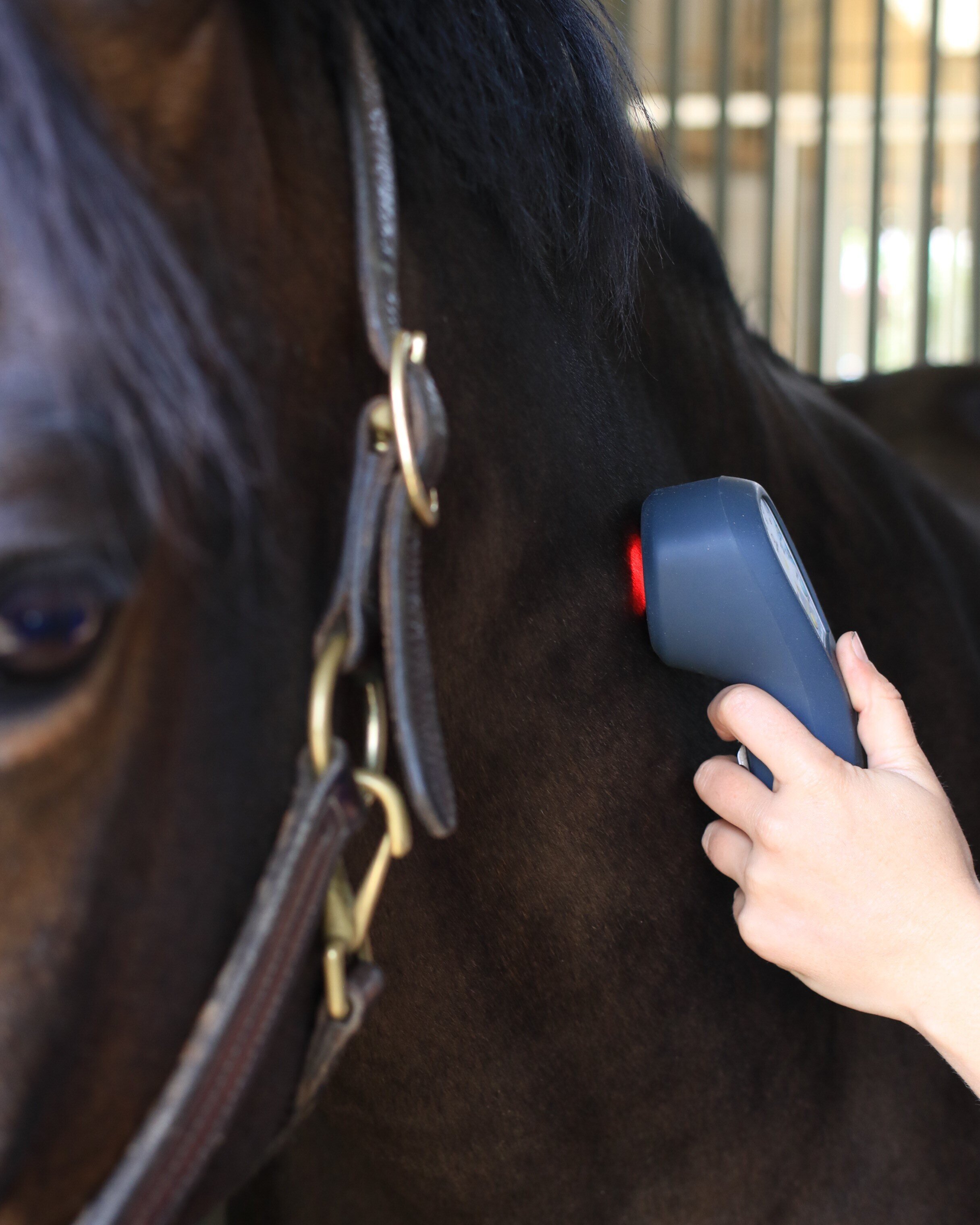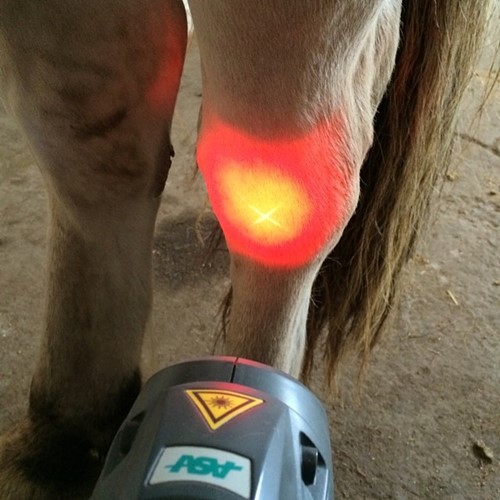Why Equine Therapy is Becoming a Preferred Alternative for Emotional Wellness
Why Equine Therapy is Becoming a Preferred Alternative for Emotional Wellness
Blog Article
How Laser Treatment in Equine Therapy Is Changing Veterinary Look After Horses
Laser treatment has emerged as a transformative approach in equine veterinary care, supplying a non-invasive remedy that quickens healing and boosts overall health and wellness. The transportability and adaptability of laser treatment devices even more highlight their growing indispensability among vets.

Recognizing Laser Therapy
Understanding laser treatment is vital for appreciating its function in equine treatment. Laser therapy, also understood as photobiomodulation, involves the application of details wavelengths of light to tissues, which can result in different biological effects. This restorative modality harnesses the power of light energy to permeate the skin and underlying tissues, stimulating cellular procedures and enhancing tissue repair work.
The innovation behind laser therapy is based in the principle of photochemistry, where photons are absorbed by chromophores within cells, resulting in boosted ATP production and modulation of reactive oxygen species. This, subsequently, promotes mobile proliferation, minimizes swelling, and speeds up recovery. Vet specialists utilize various kinds of lasers, including low-level lasers (LLLT) and high-power Class IV lasers, depending on the certain healing objectives and the nature of the equine problem being dealt with.
Various laser wavelengths and power setups are thoroughly picked to target different cells midsts and accomplish desired scientific end results. Safety and security protocols are paramount, as incorrect use can lead to thermal damages or suboptimal therapeutic results. Thus, a thorough understanding of laser therapy's devices and applications is important for its reliable implementation in equine veterinary technique.
Advantages for Equine Health
The myriad advantages of laser therapy for equine wellness include boosted recovery, discomfort reduction, and enhanced flexibility. This sophisticated therapy method leverages specific wavelengths of light to permeate tissues, boosting cellular function and promoting rapid tissue repair. The non-invasive nature of laser therapy guarantees very little stress and discomfort for the horse, assisting in a smoother recuperation process.

By minimizing swelling and discomfort, and enhancing cells repair service, laser therapy helps in restoring joint function and muscle flexibility. Therefore, laser treatment stands as a transformative tool in modern-day horse veterinary care.
Common Problems Treated
Laser treatment has arised as a versatile therapy option for a range of common equine problems. Among these, bone and joint injuries are especially amenable to laser treatment. Soft cells injuries, such as tendonitis and tendon stress, gain from the anti-inflammatory and analgesic results of laser therapies, which speed up healing and minimize discomfort. Additionally, laser therapy is effective for conditions like osteoarthritis, where it helps alleviate joint inflammation and promote cells fixing.
Wound monitoring is one more area where laser therapy has shown significant assurance. Persistent injuries or slow-healing ulcers can be especially challenging in equines, however laser therapy enhances mobile regeneration and enhances blood circulation, hence speeding up the healing process. Moreover, laser therapies have actually been effectively used in taking care of unguis problems such as laminitis and abscesses, minimizing pain and promoting quicker healing.
Equine athletes often experience performance-related problems like muscle mass discomfort and tension fractures. Laser therapy help in minimizing muscular tissue fatigue and speeds up the recovery of micro-injuries, hence making certain that equines go back to peak performance faster. By addressing these varied conditions, laser treatment is changing the landscape of vet treatment, offering a non-invasive, efficient choice to conventional therapies.
Technology Behind Laser Treatment

Laser tools used in vet medicine usually utilize low-level laser treatment (LLLT) or chilly laser treatment. Unlike high-powered medical lasers, these gadgets run at lower power degrees, maximizing restorative benefits while lessening thermal damages. The power from the laser light boosts adenosine triphosphate (ATP) manufacturing, enhances mobile metabolic rate, and increases cells repair processes.
Modern laser treatment devices for equine treatment is made with adjustable settings to cater to the details demands of different tissues and problems. Equine Therapy. Parameters such as wavelength, power density, and therapy duration can be finely tuned, using customized restorative solutions. In addition, advancements in laser modern technology have resulted in the development of mobile, handheld gadgets, making it much easier for veterinarians to give treatment in a range of setups, from facilities to stables. This technical development is a foundation in the reinventing of equine vet care.
Success Stories and Study
Showcasing the substantial advantages of laser treatment, many success tales and situation researches brighten its transformative influence on equine health. One such instance involves a thoroughbred racehorse struggling with chronic tendonitis. Conventional therapies yielded marginal improvement, yet after incorporating laser therapy into the regimen, the steed displayed significant reductions in inflammation and discomfort within weeks, inevitably returning to useful site affordable racing.
An additional compelling example features a dressage horse identified with extreme neck and back pain, limiting its performance. A veterinary team employed low-level laser treatment (LLLT) to target the swollen locations, resulting in marked improvement in versatility and a noteworthy decrease in discomfort. Over several sessions, the equine reclaimed its peak kind, showcasing the efficacy of laser treatment in attending to musculoskeletal problems.
Additionally, a research study carried out at a leading equine center taken a look at 50 equines with various soft tissue injuries treated with laser treatment. The results were striking: 85% of the equines showed sped up recovery times and enhanced wheelchair. These instances emphasize the convenience and performance of laser therapy in equine medication, providing a non-invasive, scientifically-backed technique to boosting recovery and efficiency in horses.
Conclusion
Laser treatment is transforming equine veterinary treatment by supplying a non-invasive therapy try here that speeds up healing, decreases swelling, and minimizes discomfort. With its effectiveness in dealing with a variety of conditions, from bone and joint injuries to persistent ailments like osteoarthritis, this modern technology considerably boosts equine health and wellness and flexibility. The transportability and versatility of laser therapy additionally highlight its transformative influence on veterinary techniques, strengthening its function as an important tool in modern-day equine health care.
Report this page